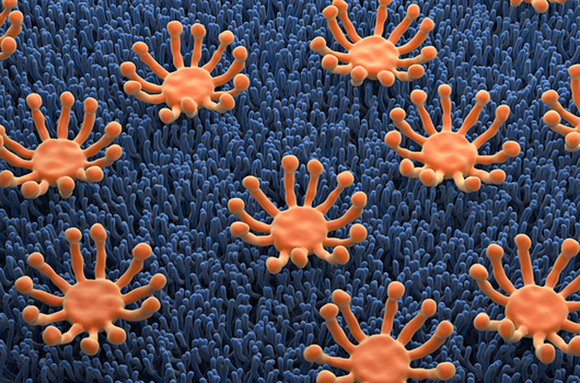Getting your Trinity Audio player ready...
The act of crying in humans is linked to the expression of intense emotions. Crying serves as a means of expressing our feelings, providing an essential outlet for emotional release. The act of crying, and the tears that accompany this emotional release, can manifest in response to various stimuli such as sadness, stress, happiness, or excitement, and they help us determine when people in our vicinity are experiencing an emotional upheaval or distress.
Read more:
Despite the presumed clarity of this way of emotional expression, crying remains a multifaceted behavior observed not only in humans but also in other animals, the full extent of its importance and role still eludes us. Research indicates that tears harbor chemical messages, enabling individuals to communicate with and influence those around them. In a recent study, conducted in Noam Sobel's lab at the Weizmann Institute of Science, researchers found that the scent of women's tears reduces aggressive tendencies in men.
Scents and Sensibility
Every day, our bodies generate numerous secretions, each fulfilling essential roles. Sweat, for instance, primarily composed of water, evaporates off our skin, releasing heat in the process. This natural mechanism aids in temperature regulation, allowing us to cool down, especially in warmer environments.
Tears, conversely, serve to lubricate and shield the eyes from dryness and infection, partially due to special proteins within tears that break down bacteria. Beyond these fundamental functions, both sweat and tears serve an additional, lesser-known purpose, they convey chemical messages.
The air around us is rich in smells that carry information, from the warning scent of spoiled food to the danger signal of smoke indicating fire. Smell can also convey information about the health and well-being of those nearby. Our sense of smell greatly affects us, even though we usually don't give it much thought. The constant influx of smells can influence the body's hormonal balance, nervous system activity, and ultimately, our behavior.
Taking sweat as an example, it contains various substances, and its composition varies depending on the individual's condition. When we smell the chemical signals released in another person's sweat, our response to each unique composition may vary.
In humans, much is still unknown about the effect of tear-derived chemical signals on behavior, but studies of the animal world provide compelling evidence. For instance, research on mice has revealed that tears produced by males contain a protein that stimulates heightened sexual activity in females. Additionally, mouse pups secrete another protein in their tears, signaling to adult males not to engage in sexual behavior towards the young ones who have not yet reached sexual maturity.
In the case of humans, the impact of tears on behavior has not been directly assessed, but there is existing evidence indicating that the chemical signals present in tears influence the human body.
In Noam Sobel's lab, it was previously discovered that the scent of women's tears reduces testosterone levels in men - a physical response associated with a decrease in aggressive behavior. Now, researchers used additional tools to examine the extent of the effect of the scent of tears on brain activity and behavior of the subjects.
2 View gallery


Previous experiments revealed that the scent of women's tears reduces testosterone levels in men
(Photo: Shutterstock)
For Whom the Tear Falls
The researchers recruited six female volunteers in their twenties, who self-reported a propensity for crying easily. The volunteers watched sad videos, shed tears, and collected them in containers. In the next phase, the male participants in the experiment were exposed to smell jars containing the tears of these subjects or a saline solution that had been dripped onto the cheeks of the same women who provided the tears - both samples were supposedly odorless.
Immediately afterward, the men were asked to play a computer game aimed at earning money. The subjects were informed they were playing against another player, who quickly began to provoke them and steal their money within the game. The subjects did not know that the unfriendly player was not human but actually the computer. They were given the option to retaliate against the other participant without monetary reward, or to ignore the provocations, continue playing, and earn money for themselves.
The experiment's results showed that smelling tears significantly affected the participants' behavior, to such an extent that it surprised the researchers: following exposure to the tears, there was a decrease of about 40% in vengeful behavior, described in literature as a form of aggression, compared to the level of this behavior following exposure to the scent of saline. This behavioral change may reflect the decrease in testosterone levels in the men who smelled the tears.
To understand the neural processes involved in this behavioral change, researchers followed the brain activity of the subjects using functional magnetic resonance imaging (fMRI) during the game. This scan allowed the researchers to track blood flow in the brain, and to deduce from it the level of activity in various brain regions. Among other findings, they noted that while the participants smelled the tears, there was a decrease in brain activity in regions associated with aggression.
The primary organ that many animals utilize to detect social chemical messages is the vomeronasal organ (VNO), known as Jacobson's organ. This organ accounts for their ability to respond to the chemical signals present in tears. The prevailing opinion is that in humans, this organ has either atrophied or possibly does not exist at all, leading to the assumption that humans may have a diminished capacity to respond to such signals.
To understand how the participants still perceived and responded to the chemical signals, the researchers checked whether among the olfactory receptors present in the human nose there are those that respond to tears. These receptors function like tiny antennas, identifying various molecules in the air, and allow the nose to inform the brain about various chemical messages.
The researchers grew nerve cells in culture plates expressing 62 types of receptors selected from about 350 types that exist in the human nose and found among them four receptors that responded to tears but not to saline.
2 View gallery


Researchers investigated whether some of the olfactory receptors in the human nose respond to tears and found four receptors that did
(Illustration: Nemes Laszlo / Science Photo Library)
Where Do I Sniff?
Our environment is laden with messages that our bodies absorb and analyze, often without us being aware of them or understanding their meaning. The tears humans shed contain chemical messages that are detected by our olfactory system, and it seems they can influence the way we behave, as in the case described regarding the level of aggression in men.
Despite the new knowledge accumulated over the years, further research is required to fully understand the impact of the chemical signals in tears on our behavior. The current study only examined how women's tears affect men's behavior, and it would be interesting to examine how tears affect women, as well as the effect of men's tears on both genders.
Nevertheless, it is increasingly evident that tears play pivotal roles in human communication, underscoring how factors shaping our actions often lie right under our noses.

